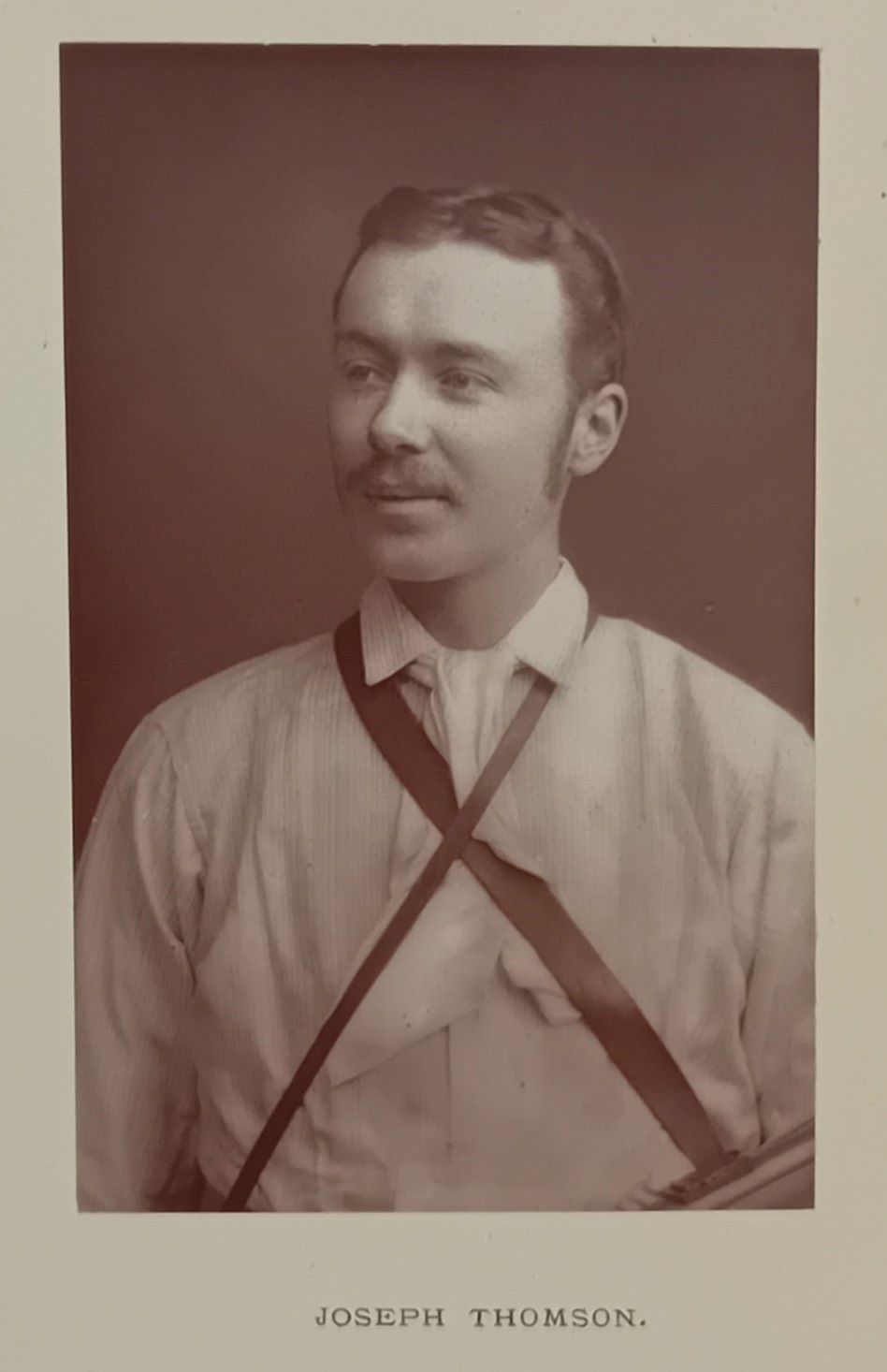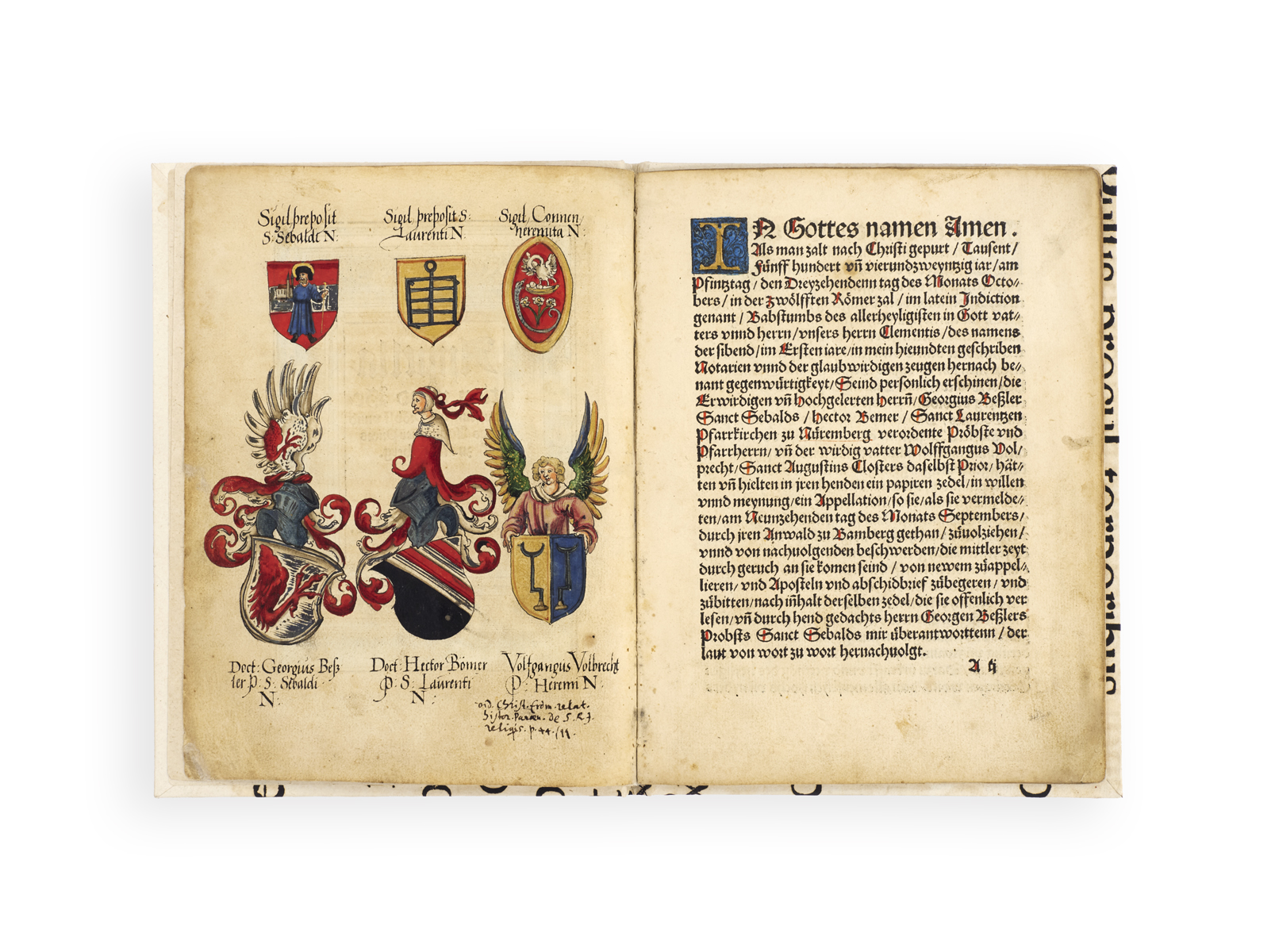

‘THOMSON’S RECORDS OF HIS EXPLORATION TAKE A HIGH PLACE’
THOMSON, Joseph.
To the central African lakes and back: the narrative of the Royal Geographical Society’s East Central African Expedition, 1878-80 ... With a short biographical notice of the late Mr Keith Johnston, portraits, and a map ... Second edition.
Boston, Houghton, Mifflin, and Company, 1881.
2 vols, 8vo, pp. xxiv, 320, with photographic portrait frontispiece of Johnston and folding map; viii, 323, [1], with photographic portrait frontispiece of Thomson and folding geological map; some foxing to vol. 1 half-title, short closed tear to vol. 1 map, marginal chips to a few pages in vol. 2 and closed marginal tear to p. 303; overall very good in original brown cloth, spines lettered in gilt, upper covers in black; some wear to extremities and light marks to boards, endpapers renewed.

Added to your basket:
To the central African lakes and back: the narrative of the Royal Geographical Society’s East Central African Expedition, 1878-80 ... With a short biographical notice of the late Mr Keith Johnston, portraits, and a map ... Second edition.
Second edition, published in the same year as the first. ‘In 1878 Thomson was appointed geologist and naturalist to an expedition under Alexander Keith Johnston, which was sent out by the Royal Geographical Society for the exploration of East Central Africa ... By the death of Keith Johnston on 28 June 1879 within the malarial zone at Behobeho, Thomson suddenly found himself leader of the expedition. He reached Lake Tanganyika on 3 Nov., and on Christmas day had the pleasure of confirming Stanley’s theory as to the geographical relations of the Lukuga outlet to the lake. After a brief visit to Ujiji on the eastern shore, Thomson again started westwards with the intention of reaching the headwaters of the Congo; but a mutiny of his men – alarmed at the risks they ran from the warlike Warua – obliged him to turn back (1 March 1880) when within a day’s march of the river. His homeward route from the south end of the lake northward towards Tabora gave him an opportunity of making a detour to the neighbourhood of Lake Leopold (Lake Hikwa), which he was the first white man to see. By 27 May 1880 Thomson was resting at Tabora (Unyanyembe), and after a march of five hundred miles he reached the coast on 10 July ... In physique, intellect, and morale, Thomson was an ideal explorer ... But above all stands Thomson’s capacity of dealing with men. He passed through the midst of the most ferocious of African tribes when their hostility against the white man was at fever heat without firing a shot in self-defence or leaving anywhere a needless grave. As literature Thomson’s records of his exploration take a high place’ (DNB).

